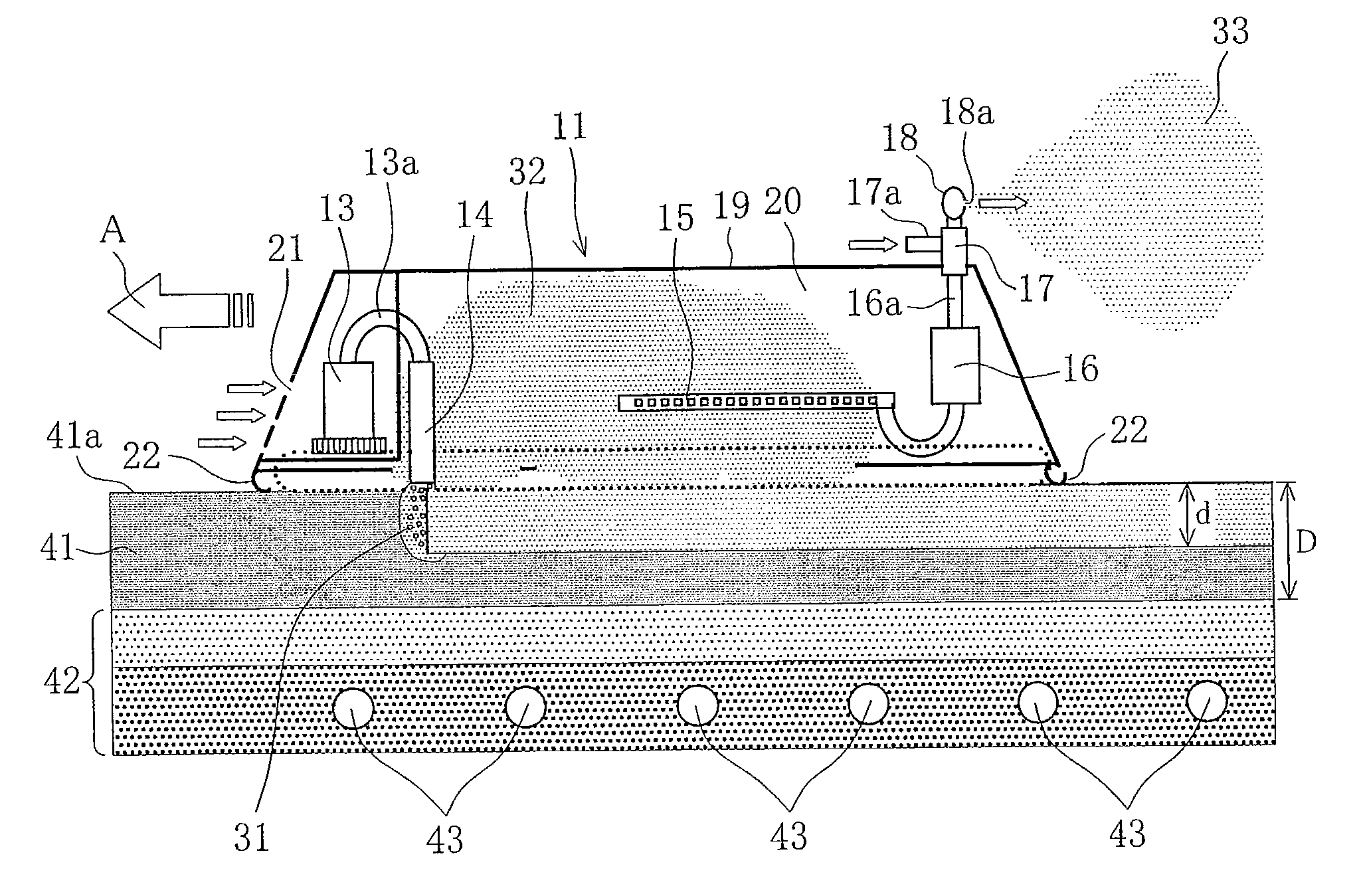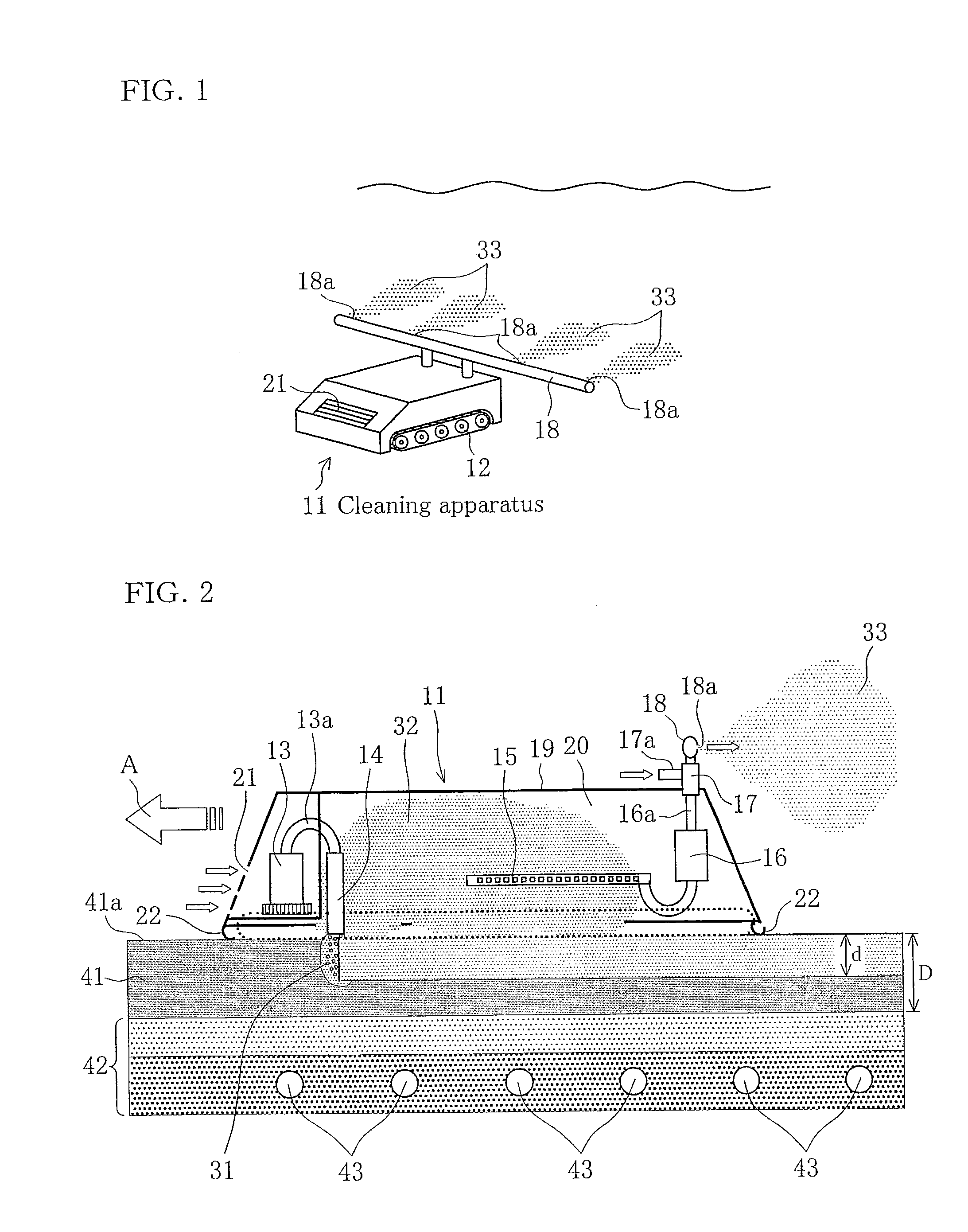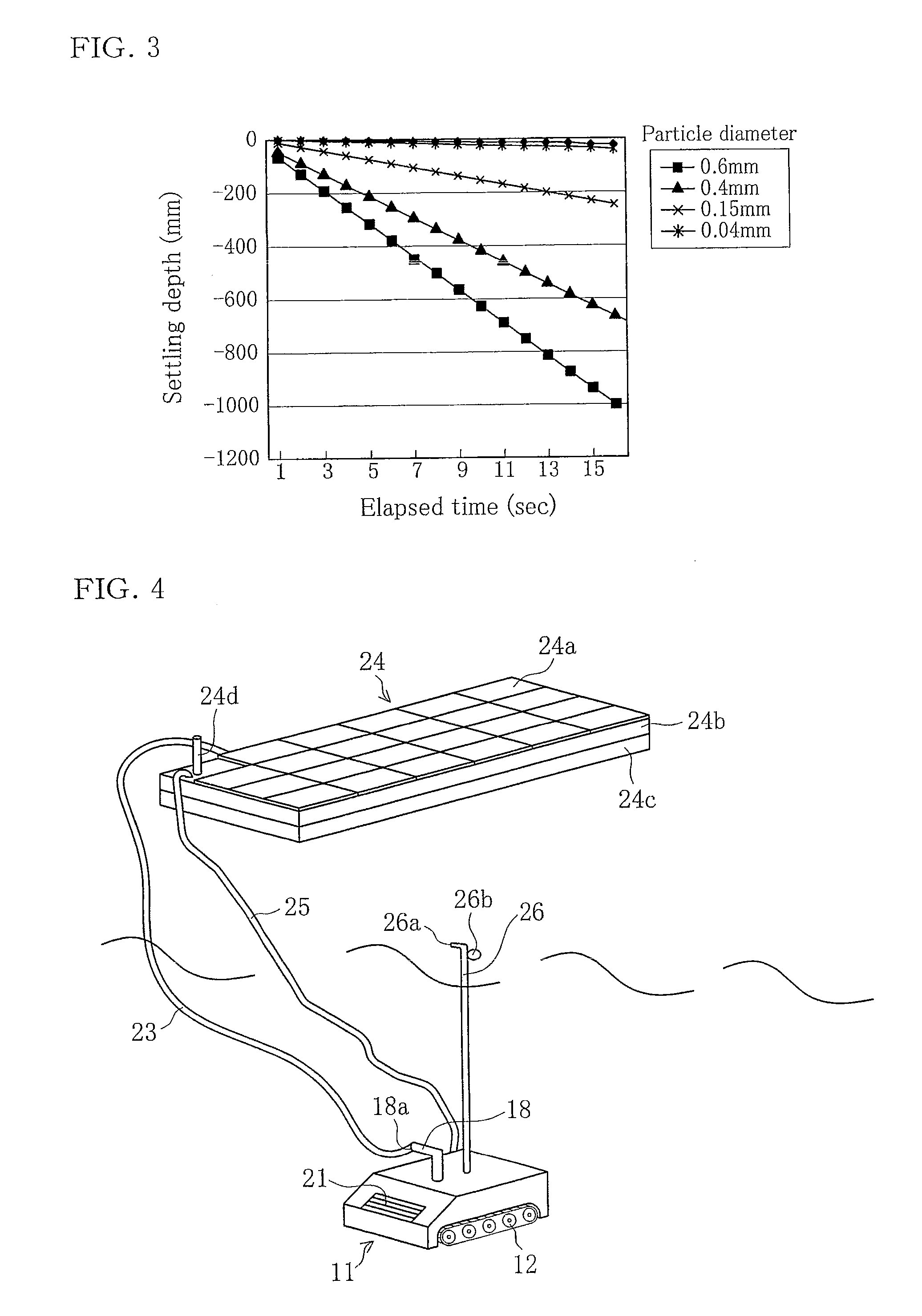Cleaning apparatus for filtration layer in seawater infiltration intake
a technology of filtration layer and cleaning apparatus, which is applied in the direction of filtration separation, separation process, treatment involving filtration, etc., can solve the problems of water intake stopping, environmental pollution and biofouling of reverse osmosis membrane, and achieve stable implementation of infiltration intake, reduce the impact of surrounding environment, and prevent clogging
- Summary
- Abstract
- Description
- Claims
- Application Information
AI Technical Summary
Benefits of technology
Problems solved by technology
Method used
Image
Examples
examples
[0035]Examples of the present invention are described in detail below, with reference being made to FIG. 1 to FIG. 6.
[0036]FIG. 1 is a schematic drawing showing an external view of a cleaning apparatus 11 for a sand filtration layer according to the first example.
[0037]The cleaning apparatus 11 of the first example employs drive wheels 12 with a crawler belt, as a driving device configured to move across the surface of the sand filtration layer. The cleaning apparatus 11 is an automated self-propelled cleaning apparatus which operates on a surface of the sand filtration layer according to a pre-installed program, moving in a horizontal direction at a predetermined speed on a specified surface of the sand filtration layer at a set time, while cleaning an infiltration surface beneath an area where the device passes under predetermined conditions.
[0038]The timing and time-frame for cleaning are optimally set so as not to cause clogging by clogging substances, depending on the water qua...
PUM
| Property | Measurement | Unit |
|---|---|---|
| depth | aaaaa | aaaaa |
| particle size | aaaaa | aaaaa |
| particle diameter | aaaaa | aaaaa |
Abstract
Description
Claims
Application Information
 Login to View More
Login to View More - R&D
- Intellectual Property
- Life Sciences
- Materials
- Tech Scout
- Unparalleled Data Quality
- Higher Quality Content
- 60% Fewer Hallucinations
Browse by: Latest US Patents, China's latest patents, Technical Efficacy Thesaurus, Application Domain, Technology Topic, Popular Technical Reports.
© 2025 PatSnap. All rights reserved.Legal|Privacy policy|Modern Slavery Act Transparency Statement|Sitemap|About US| Contact US: help@patsnap.com



